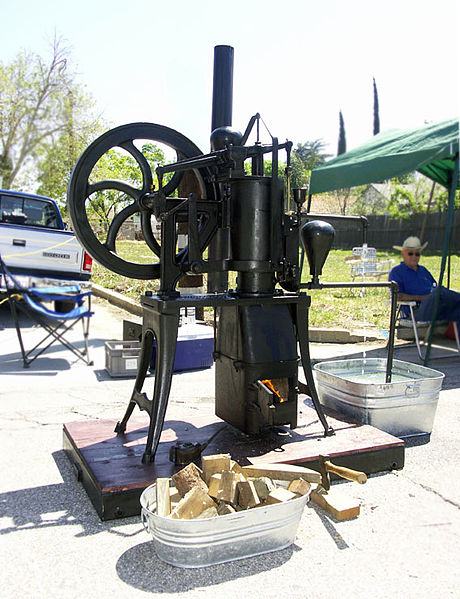Stirling engine example (“Ericsson style hot air engine” by Rob Skinner on wikipedia.org)
This past week, we had the president of Cool Energy, Sam Weaver, speak to us at work about his commercial Stirling engines. I had known about Stirling engines for a while but was unsure on their specific operation. Sam gave a great talk along with an educational demonstration of a small, tabletop engine.
That’s when it dawned on me. What about having students build their own version of a tabletop Stirling engine? It’s a great way to show how the expansion and contraction of a gas can be transformed into rotational energy.
For a simple experiment, fill a balloon with air and put it in the freezer for an hour. When you take it out, the balloon will have decreased in size due to the contraction of the air. The Stirling engine relies on the same principles to turn the expansion and contraction of gas into mechanical energy.
A few years ago, Instructables user thecheatscalc created an amazing tutorial on how to build your own mini Stirling engine using household items and 2-part epoxy.
The engine is a fairly involved project but should be doable by high school and college students. Here are a few ideas to make the idea more interesting:
- Calculate the efficiency of the engine
- Make a competition: who can build the best/fastest/smallest/etc. engine?
- Science fair idea! What can be done to increase the engine’s efficiency or speed?

